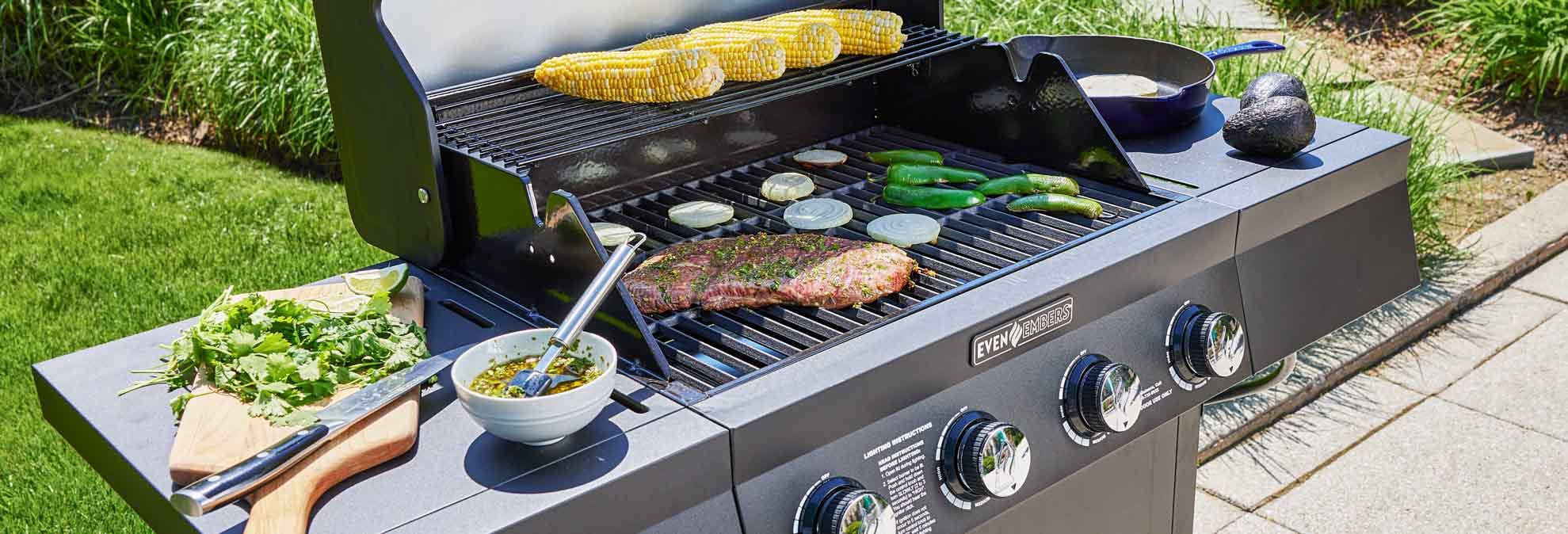
How to Choose a Grill

Home & DIY Editor

Senior Home & Tech Writer
Do you believe that a grill is synonymous with summer and outdoor living? If so, you’ll want to choose one that is easy to use, reliable year after year, and cooks your food exactly the way you want it. CR tests dozens of new grills annually to help everyone—from the first-time buyer to the seasoned grill master—find the model that’s right for them.
The good news is that you don’t have to spend a lot to elevate your grill game: While some larger, feature-packed grills cost more than $3,000, it’s not hard to find a top-performing option in our ratings for under $500.
When shopping for a grill, you can choose among gas, charcoal, and pellet models—each of which, according to our tests, has its own advantages. You might also consider kamado grills, which hold more charcoal than traditional charcoal grills, or gas-fueled flat-top grills, which feature a griddlelike surface instead of open grates.
In this guide, we’ll explore what to look for when shopping for a grill and how our lab testing can help you find a model that fits your needs. We also break down additional features found on gas and charcoal grills and introduce you to some notable grill brands.
To find out how the gas, charcoal, pellet, kamado, and flat-top grills we’ve tested perform in our labs, see our complete grill ratings of more than 200 models. During our thorough testing program, CR engineers wire each model with thermocouples that enable them to measure temperatures at several different points.
Gas Grills
Gas grills are the most widely owned type of grill in the U.S., and they make up the majority of our ratings. They’re typically more convenient than charcoal grills because you simply turn the burners on to start the grill. In this section, we’re referring to conventional open-grate grills powered by gas. (Flat-top grills are also powered by gas burners, but they fill a different need, so we’ll address them in a separate section later.)
How to Choose a Gas Grill
To test how well gas grills cook, CR engineers use thermocouples to perform a range of precise temperature-related tests. Our lab findings, along with other specs included in our ratings, can help you determine which model is right for you.
Gas Grill Types
Grill manufacturers differentiate models by the number of burners—typically two to six—but that doesn’t necessarily represent a grill’s usable cooking surface. That’s why we categorize the gas grills in our ratings (with the exception of portable grills) by the number of burger patties they can cook at one time. Consider how large your yard is and how many people you typically cook for, and decide on a size that’s right for you.
Small grills: 18 or fewer burger patties
Midsized grills: About 18 to 28 burger patties
Large grills: 28 or more burger patties
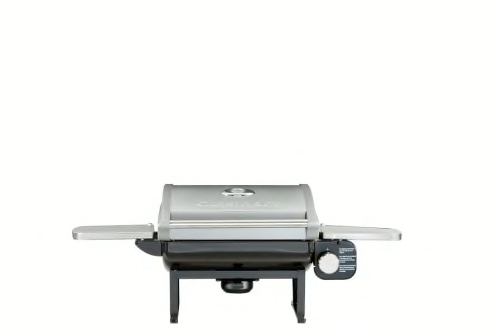
Portable Gas Grills
Perfect for camping trips and tailgate parties, portable grills are also a suitable option for smaller decks and patios.
Cost: About $100 to $520
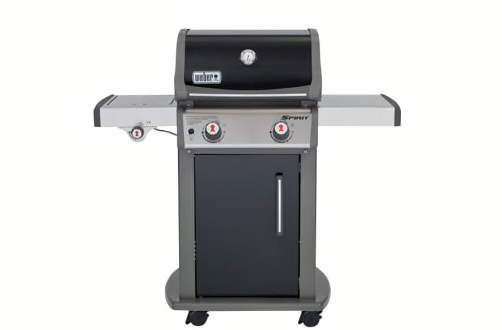
Small Gas Grills
Compact, nonportable grills save space and are a good option for family meals and small cookouts. Most have fold-down shelves to minimize their footprint while not in use. Price and appearance vary—you’ll find everything from painted steel carts to stylish stainless steel.
Cost: About $110 to $1,360.
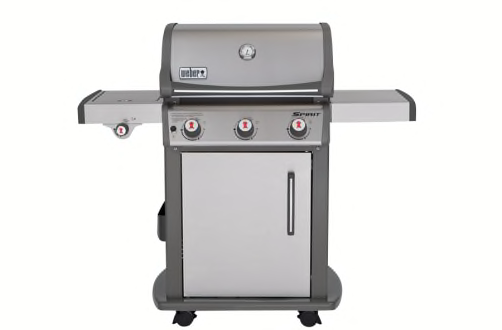
Midsized Gas Grills
This is the most widely sold grill size. In this category, you’ll find models with few features and also souped-up models with ample storage, side burners, and bells and whistles like LED lights and backlit knobs for cooking after dusk. Many mid- to higher-priced gas grills in this size range come with burner warranties of 10 years or longer.
Cost: About $150 to $3,300
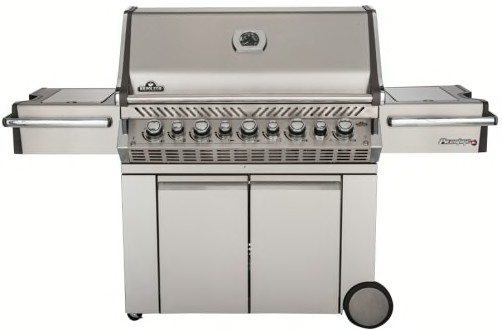
Large Gas Grills
Handling more than 28 burgers at a time, large grills have the biggest cooking surfaces. Higher-end models boast the highest-grade stainless steel and seamless construction, thicker grates, gliding drawers, extra storage space, and better-quality burners (plus more of them). These grills often come with a lengthier warranty.
Cost: About $500 to $3,300
Gas Grill Features
Some grill features are nice-to-haves, while others are musts for a safe, seamless cooking experience. Here are a few common offerings—and why you might or might not—want them on your next grill.
- 1
- / 7
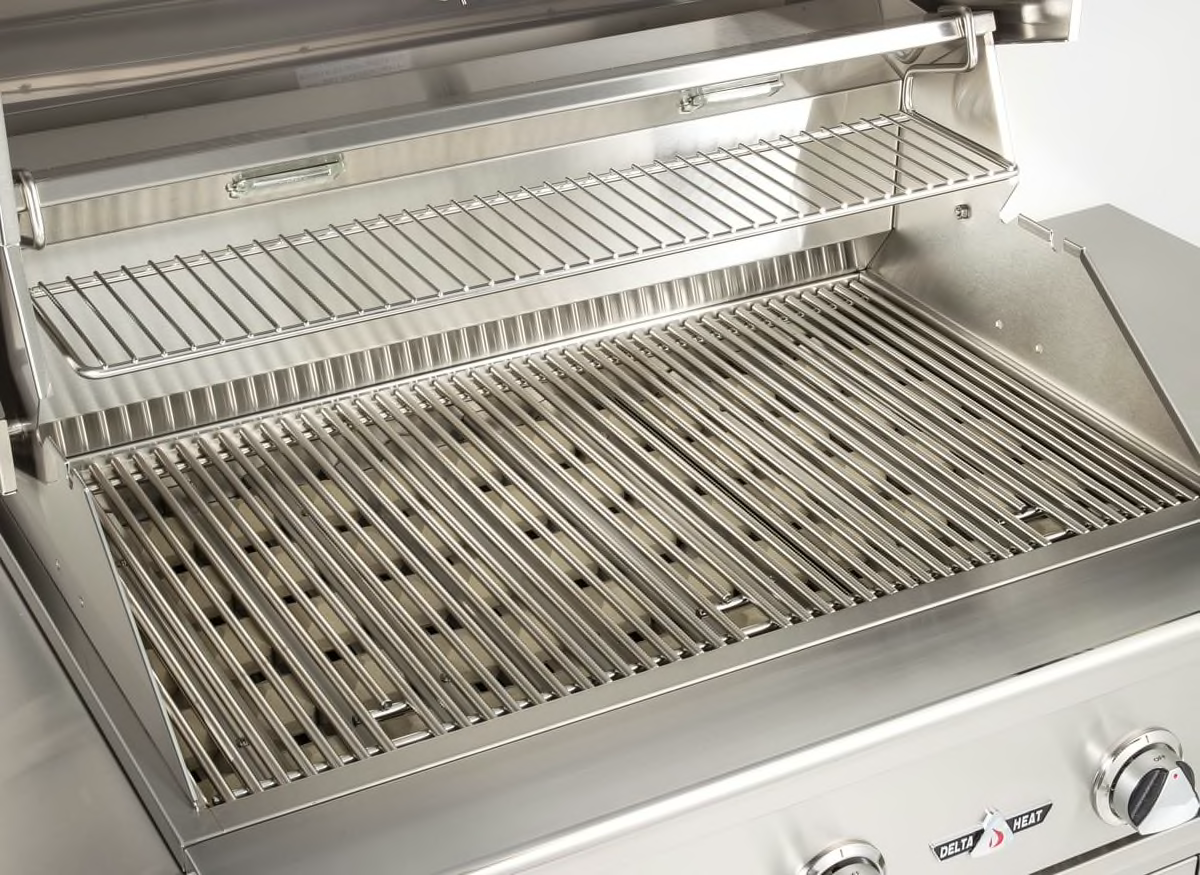
Heavy-Duty Grates
Stainless steel and coated cast-iron grates tend to be better for searing and maintaining even grilling temperatures. For the long haul, stainless is more durable.
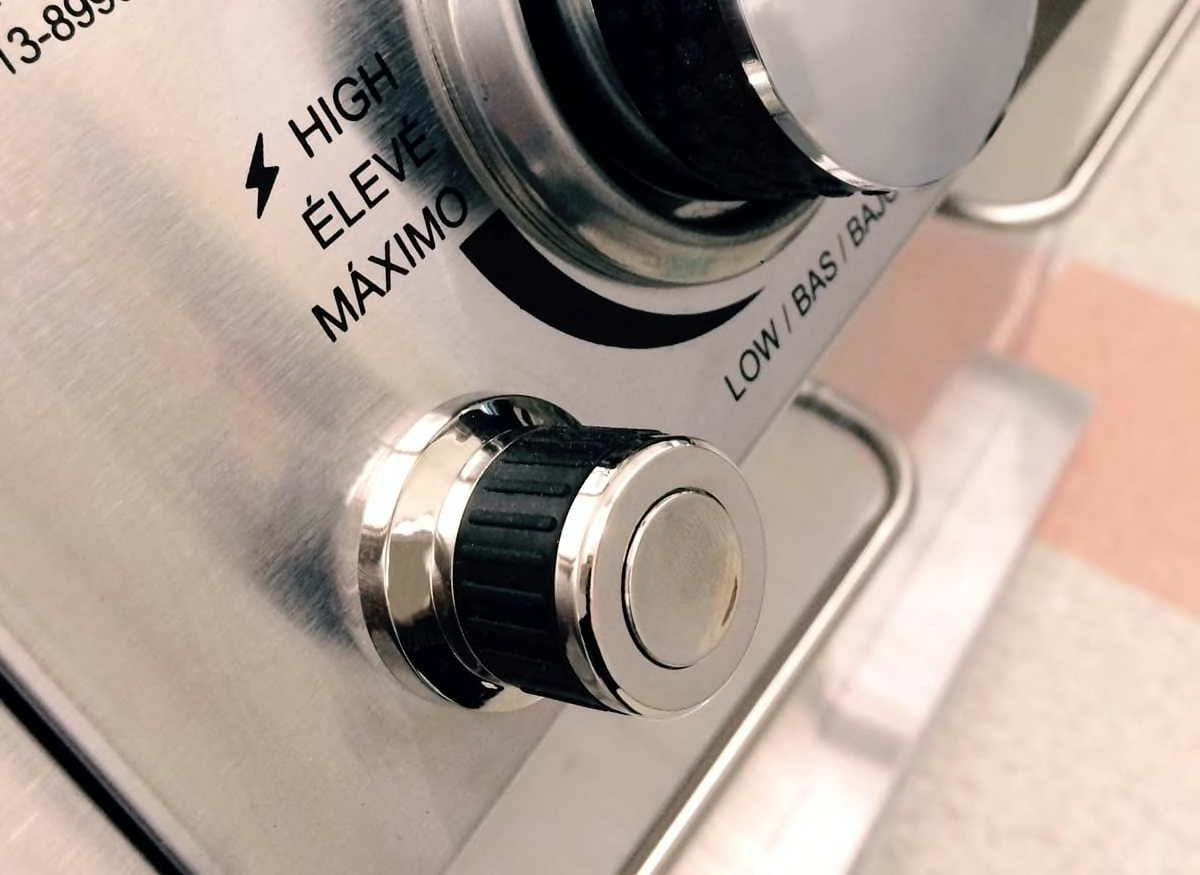
Electronic Igniter
An electronic igniter is usually easier to use and more reliable than a rotary or push-button igniter.
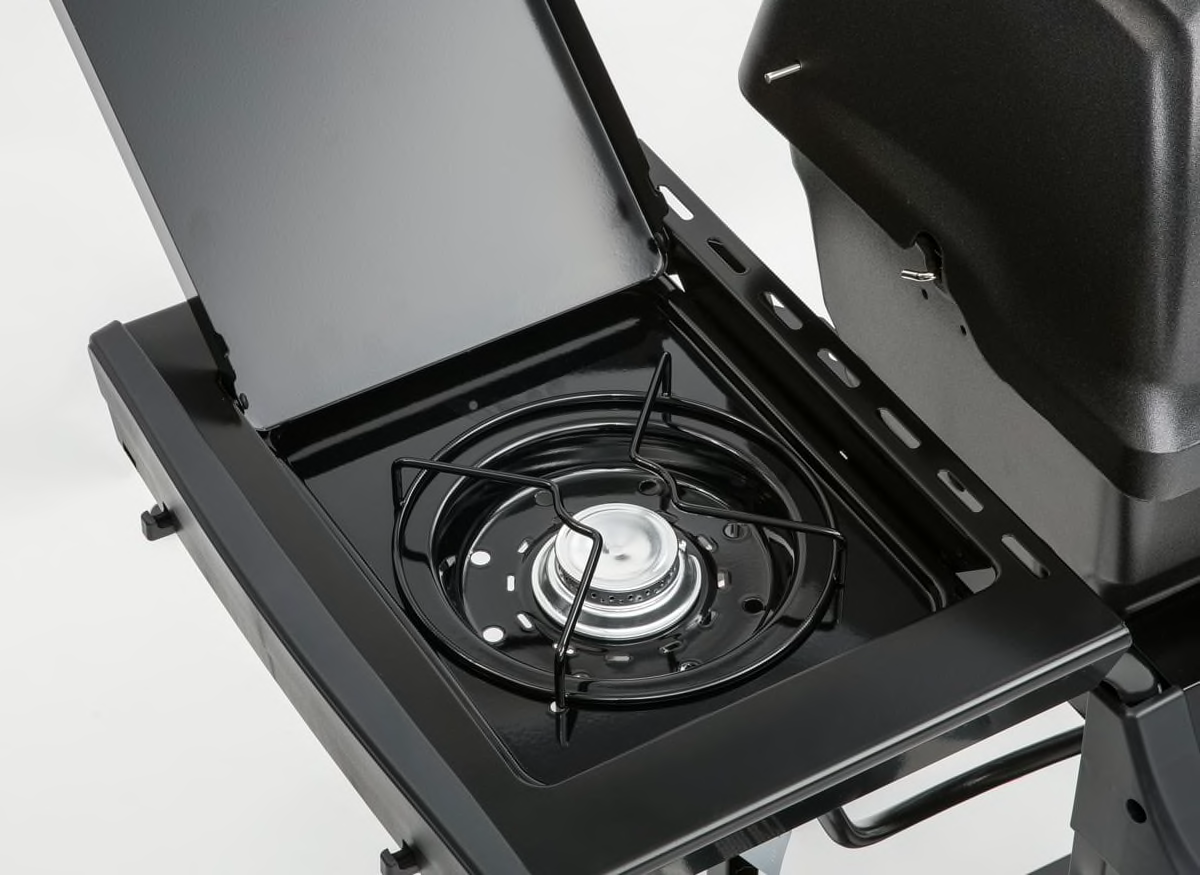
Side Burner
if you tend to cook multicourse meals on your grill, a side burner can come in handy. You can use it to boil water for corn on the cob or keep baked beans warm while you’re grilling the entrée. Some side burners have higher output that allows you to sear your side dishes.
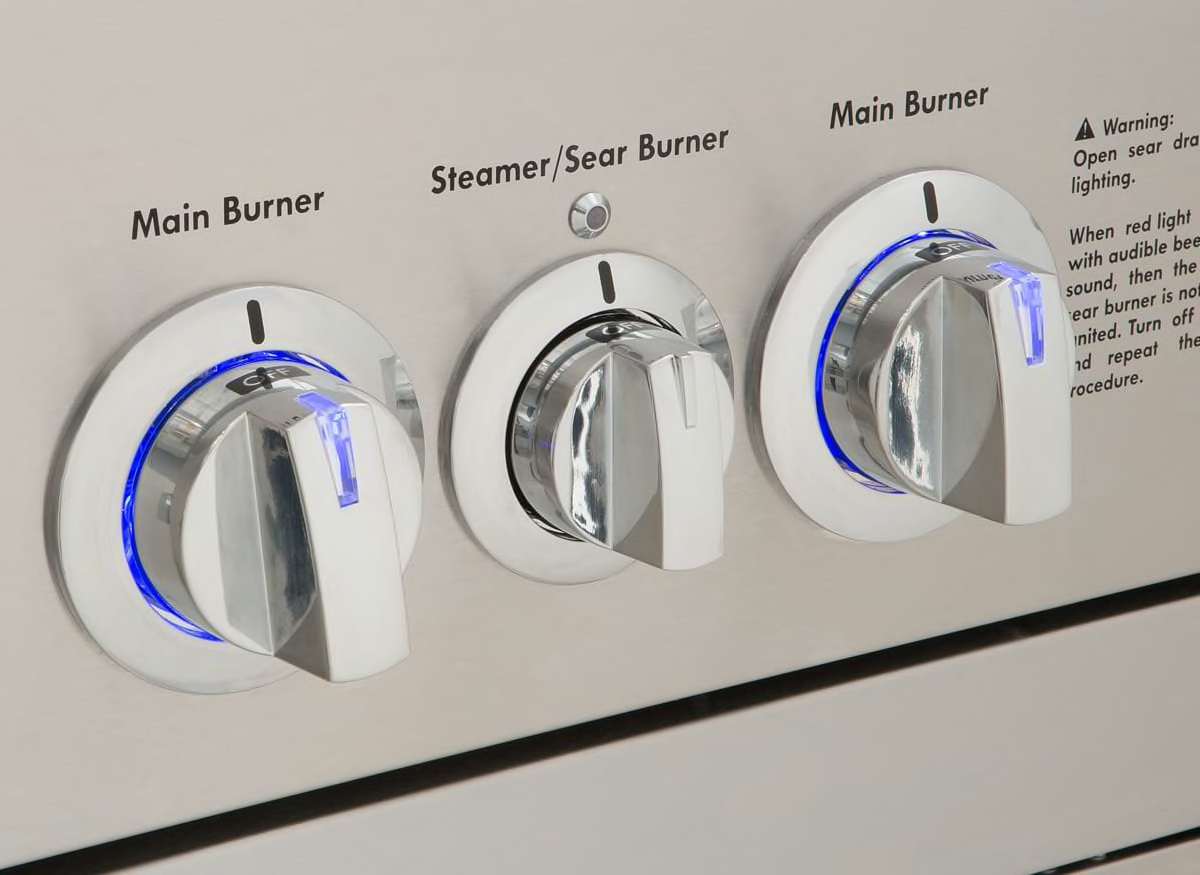
LED-Lit Controls
Like to host evening cookouts? LEDs light up the grilling surface, helping you keep tabs on your food, so you don’t accidentally overcook things. Some models feature an illuminated control panel or knobs, too.
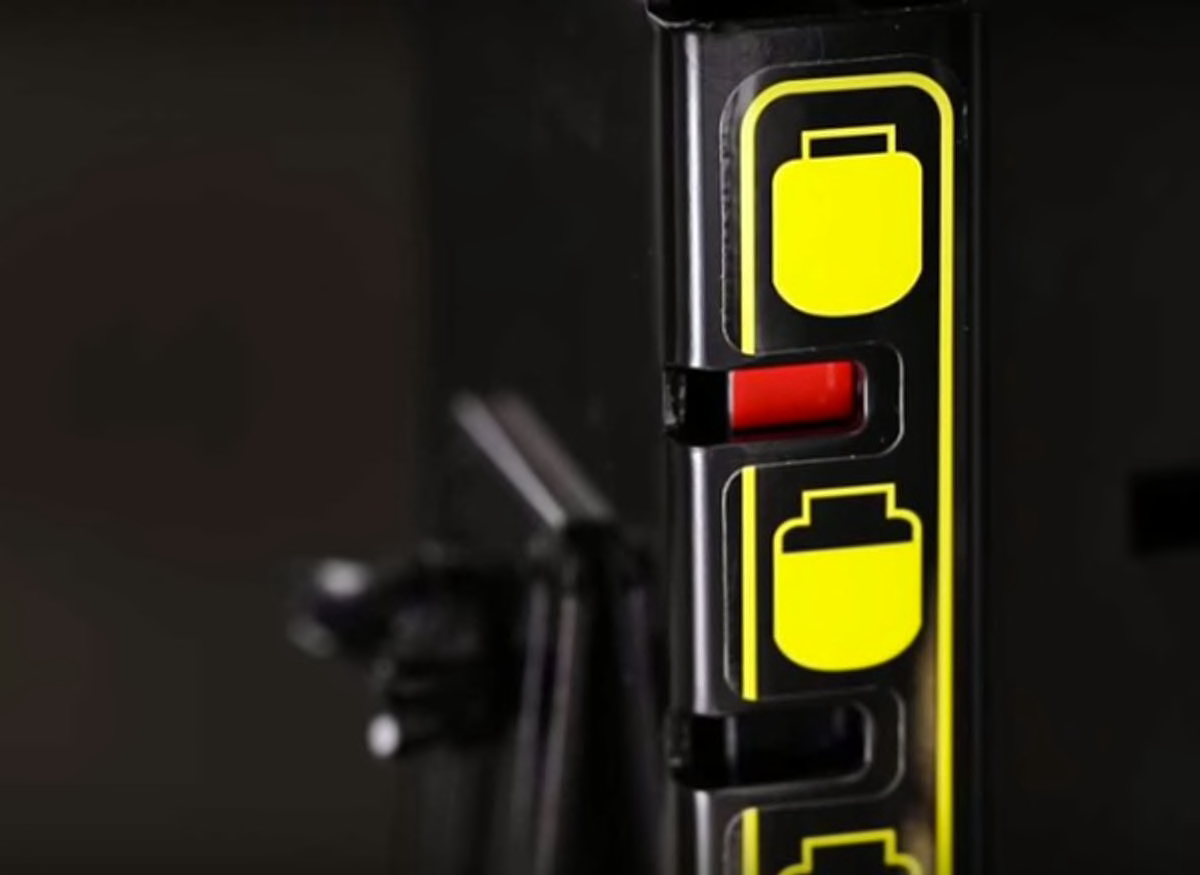
Fuel Gauge
A gauge that monitors the tank’s weight indicates how much propane is left. You can accomplish the same thing by buying a tank scale separately.
PHOTO: SPIRIT
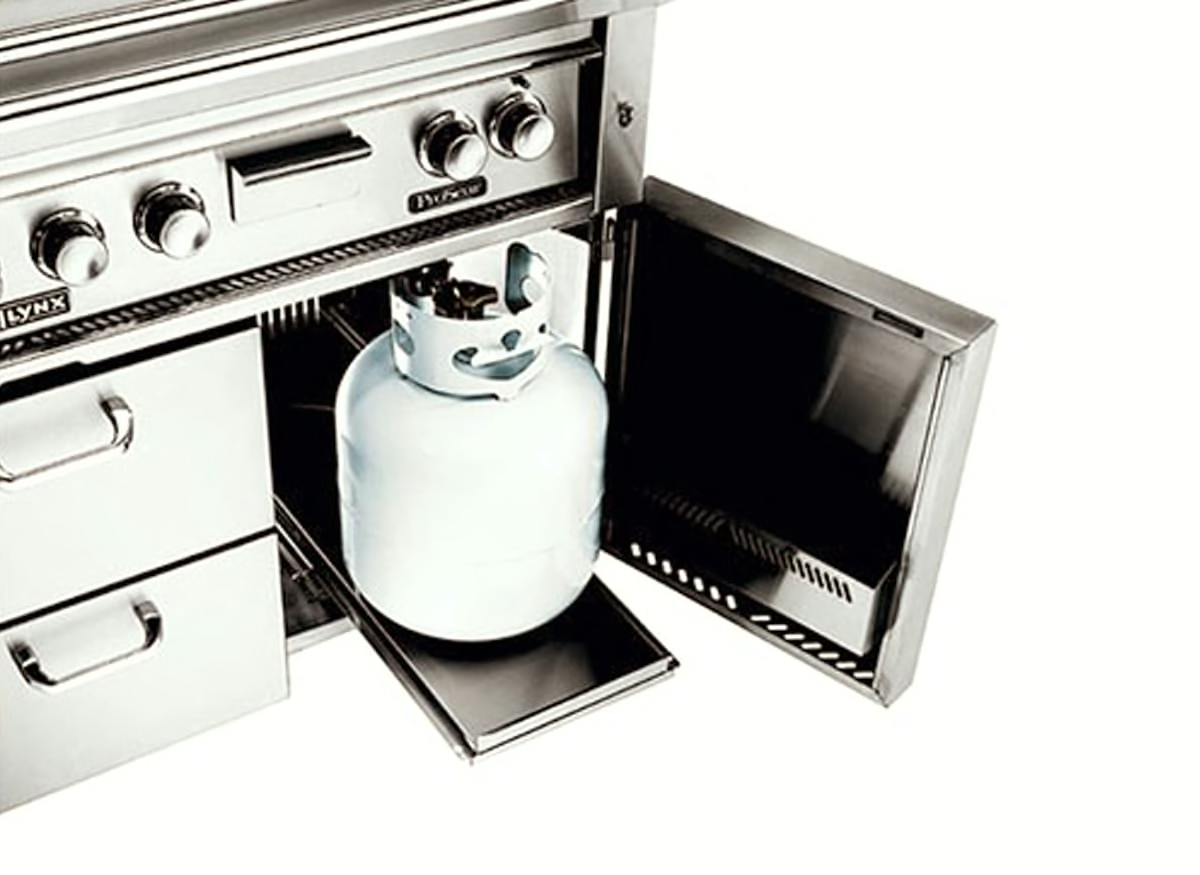
Pullout Tray for Propane Tank
A pullout tray makes turning the tank on or off a snap. It also simplifies changing the tank when you run out of gas.
PHOTO: LYNX
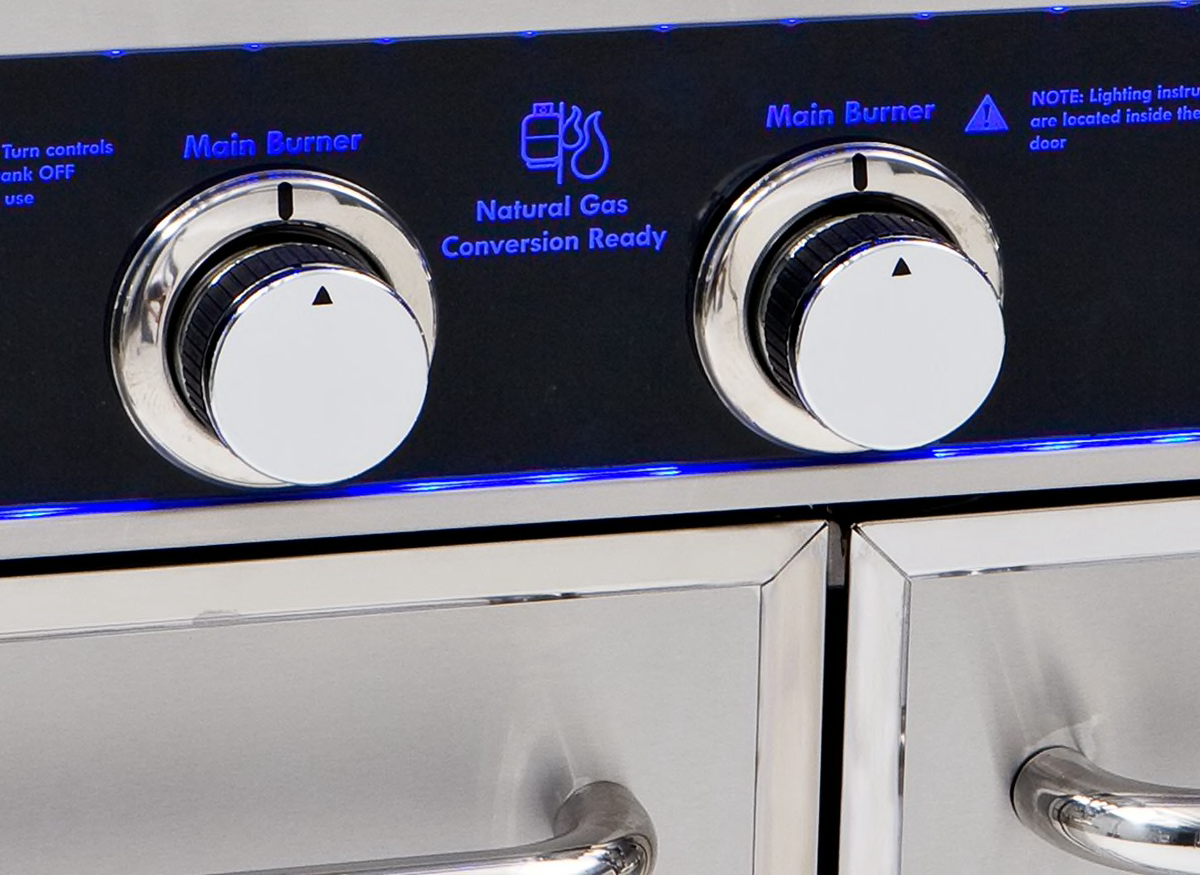
Dual-Fuel Valves or a Natural Gas Conversion Kit
Most grills use propane, but some have dual-fuel valves for conversion to natural gas. You also can buy a natural gas conversion kit for many models for $50 to $100. Once your grill is hooked up to your home’s natural gas line, it will never run out of fuel, so there’s no need to refill propane tanks. However, a grill that’s connected to your home’s natural gas source is less mobile. You’ll probably want to call a pro to run the gas line. Some gas grill brands make natural gas versions of certain models.
Heavy-Duty Grates
Stainless steel and coated cast-iron grates tend to be better for searing and maintaining even grilling temperatures. For the long haul, stainless is more durable.
Electronic Igniter
An electronic igniter is usually easier to use and more reliable than a rotary or push-button igniter.
Side Burner
if you tend to cook multicourse meals on your grill, a side burner can come in handy. You can use it to boil water for corn on the cob or keep baked beans warm while you’re grilling the entrée. Some side burners have higher output that allows you to sear your side dishes.
LED-Lit Controls
Like to host evening cookouts? LEDs light up the grilling surface, helping you keep tabs on your food, so you don’t accidentally overcook things. Some models feature an illuminated control panel or knobs, too.
Fuel Gauge
A gauge that monitors the tank’s weight indicates how much propane is left. You can accomplish the same thing by buying a tank scale separately.
PHOTO: SPIRIT
Pullout Tray for Propane Tank
A pullout tray makes turning the tank on or off a snap. It also simplifies changing the tank when you run out of gas.
PHOTO: LYNX
Dual-Fuel Valves or a Natural Gas Conversion Kit
Most grills use propane, but some have dual-fuel valves for conversion to natural gas. You also can buy a natural gas conversion kit for many models for $50 to $100. Once your grill is hooked up to your home’s natural gas line, it will never run out of fuel, so there’s no need to refill propane tanks. However, a grill that’s connected to your home’s natural gas source is less mobile. You’ll probably want to call a pro to run the gas line. Some gas grill brands make natural gas versions of certain models.
Charcoal Grills
While a charcoal grill takes more time to start up than a gas grill, it does have its advantages. Notably, you get greater control of the heat, because the size of the fire you build dictates the location and intensity of the heat. (With a gas grill, you’re limited to the output range of the burners.)
Charcoal can also impart a smoky flavor to your food that many people love. Be aware, however, that flames from charcoal grills can be higher and harder to tame than those of other grill types, so you’ll need to be careful. For example, use only long-handled tongs and spatulas specifically designed for grilling, wear a short-sleeved or tight-fitting shirt, and keep a fire extinguisher handy. (To learn more about using a charcoal grill safely, check out our article on how to cook on a charcoal grill.)
How to Choose a Charcoal Grill
We test each charcoal model with a full chimney of charcoal and spread the layer of coals evenly across the base of the grill. As with gas grills, we wire the charcoal-grill grates with thermocouples to conduct our lab tests. Our lab tests can help you determine which charcoal grill is right for you.
- Ability to grill evenly: If you plan on frequently serving large parties, look for a great evenness-performance score in our ratings. We test this with thermocouples to make sure that a big batch of burgers or hot dogs all finish at the same time.
- Ability to maintain moderate heat: Models with a high indirect-cooking score work well for slow cooking. They, can, for example, heat through a thick cut of chicken without drying it out.
- Airflow: Charcoal grills rely on airflow to regulate heat. Allowing more air to move over the coals lets a fire burn hotter, while limiting the flow keeps coals just lit, for low-and-slow cooking. Look for a model with a tight-fitting lid and solid dampers or vents that are easy to control. Models with high convenience scores have more user-friendly lids.
- Coal-bed accessibility: Our testing shows that the temperature of charcoal peaks within 20 minutes after it’s lit. So when you cook for a prolonged period, you’ll need to add coals. Look for a charcoal grill with a dedicated door to add coals to your fire, or one with hinged gates that enable you to sneak in more coals or rearrange them while you cook. It’s also helpful when the grill makes it easy to dispose of the charcoal ash. All these factors are worked into our cleaning score.
- Adjustability: Foods close to the coals sear faster but are prone to burning before they cook through. Look for a grill with a coal bed or cooking grates that can be raised or lowered with a crank—giving you one more way to tame the flames and control the heat. Wheels and shelves will also make cooking on a charcoal grill considerably more efficient and pleasant. We factor these considerations into our convenience score.
Charcoal Grill Types
Charcoal grills are typically classified by their shape. These shapes dictate not only size, but also how heat is concentrated or diffused. As you decide which kind of charcoal grill is right for you, consider what kinds of food you like to cook and for how many people.
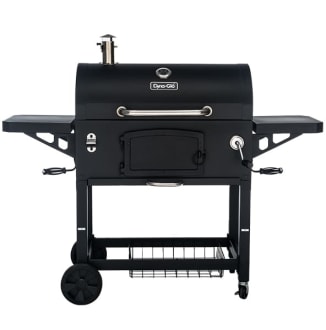
Charcoal Barrel Grills
Charcoal barrel grills are rectangular; many have helpful features, such as adjustable cooking grates and a door to add charcoal. Most also have a removable ashpan. These grills hold more food than a kettle or kamado grill—but over a thinner coal bed, so they’re better for a burger and bratwurst cookout. Keep in mind that they’ll also use more charcoal, so expect to add a lot of coals to build a layered bed for prolonged cooking.
Cost: About $80 to $800
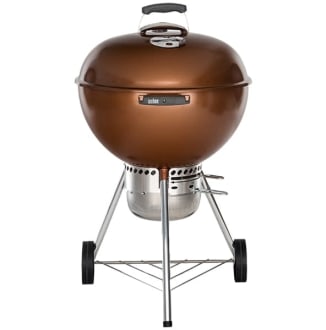
Charcoal Kettle Grills
These classic charcoal grills are smaller than most barrel or kamado-style grills, so they take up less space on a deck or patio. The tapered shape lets you build a deeper bed of coals than you can with a barrel grill, so you can sear or cook for a longer time without adding coals. But charcoal kettle grills hold less food than most barrel grills, and most of the three-legged kettle grills we’ve tested aren’t as sturdy as barrel-style grills, which generally have four legs.
Cost: About $90 to $270
Kamado Grills
Kamado grills use charcoal—and whole a lot of it—to concentrate heat across their small grates, so you end up with food that’s truly evenly cooked. That makes them a fantastic choice if you want a perfectly seared steak or two, but their tall, deep shape means a cooking surface that’s smaller than the ones found on other types of charcoal grills.
How to Choose a Kamado Grill
In the labs, we focus our tests on how well each model cooks at high heat and low heat. In addition to performance, we also look at ease of cleaning and ease of use.
- Performance at both high and low heat: Kamado grills are designed to reach a temperature of around 1,000° F—that’s higher than any other type of grill. We test each model’s ability to get that hot by quick-grilling thin-crust pizzas. We also test kamado grills on very low heat by cooking pork shoulder. To make sure you buy a model that’s both capable and versatile, find an option with a high cooking-performance score in our ratings.
- Airflow: Just like conventional charcoal grills, kamado grills rely on airflow to regulate heat. Many have a gasket on the lid and even locking latches to create the tightest seal possible. Some also have multiple dampers, which make it easier to fine-tune the temperature. The models in our ratings with a high convenience score are more likely to have such user-friendly lids (in addition to other useful features, such as shelving and wheels).
Kamado Grill Types
Kamado grills are categorized by their materials. Traditional models are made from ceramic, which is thought to offer superior heat control. The alternative is metal, which is cheaper, but our tests find that some of these models are capable of performing well, too.
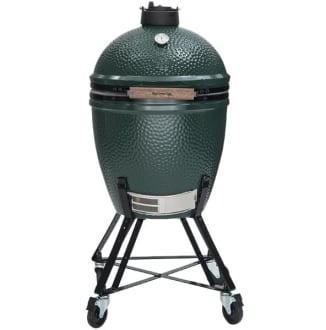
Ceramic Kamado Grills
Ceramic grills have a 1-inch-thick wall all the way around, allowing them to retain heat longer than nonceramic grills, while you use dampers to fine-tune the temperature for cooking. The catch? They tend to have a higher starting price (those in our ratings start at $800), and they’re also heavy, weighing anywhere from 170 to 300 pounds. This makes them harder to transport from the store, assemble, and move around in your yard.
Cost: About $800 to $1,200
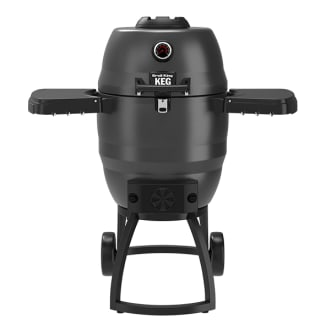
Nonceramic Kamado Grills
Nonceramic kamado grills are typically made of multiple layers of metal. With thinner walls than those of ceramic models, these grills are generally less expensive, with some large models costing as little as $350. Nonceramic grills are also lightweight and easier to move and assemble than ceramic kamado grills. But they can feel flimsy, and some aren’t as well-insulated as the best ceramic models, making it more difficult to control temperatures.
Cost: About $350 to $950
Charcoal and Kamado Grill Features
Extra features can make or break the experience of cooking on a charcoal or kamado grill. Here are a few that will not only help you control the charcoal, but also ensure that your food is cooked just how you like it.
- 1
- / 5
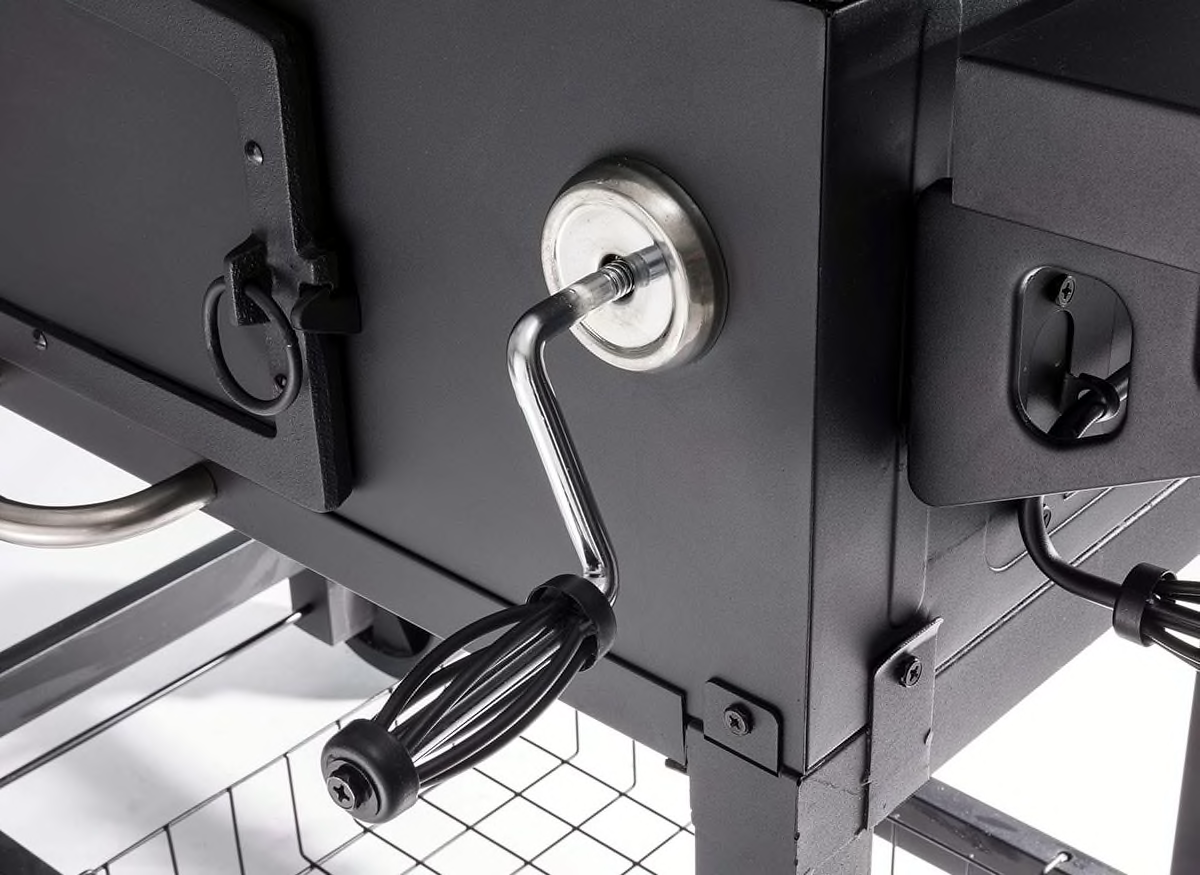
Adjustable-Height Cooking Grates
Adjustable-height cooking grates let you raise and lower food—the equivalent of turning down a burner on a gas grill. Get the food closer to the coals for searing or farther away to, say, cook a skin-on chicken breast all the way through without charring the skin.
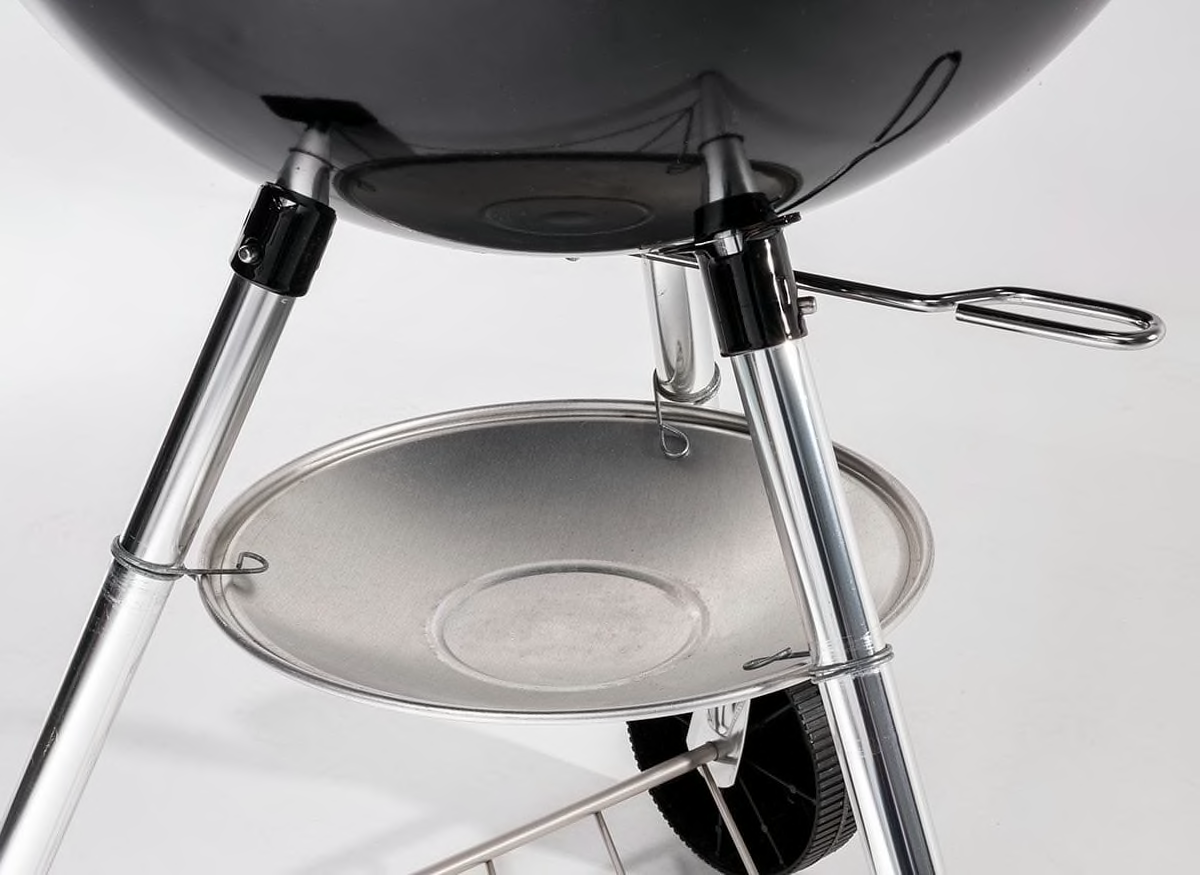
Easy-to-Clean Ashpan
Charcoal cooking can get messy. All the ash, residual coal, and food drippings tend to collect at the bottom of the grill. Models with a removable ashpan are easier to clean.
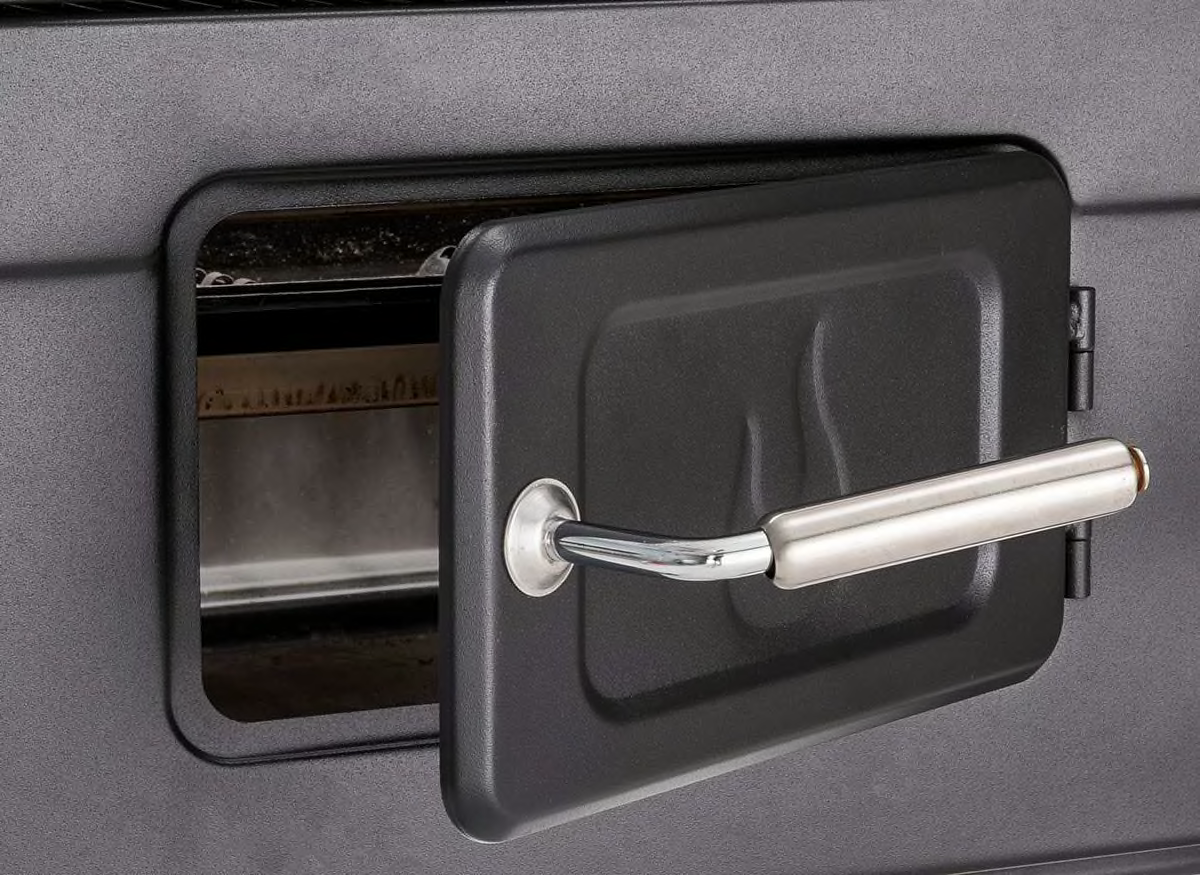
Easy-Open Grates
A dedicated coal door or grates that slide open easily allow you to add charcoal without moving your food much or removing hot cooking grates.
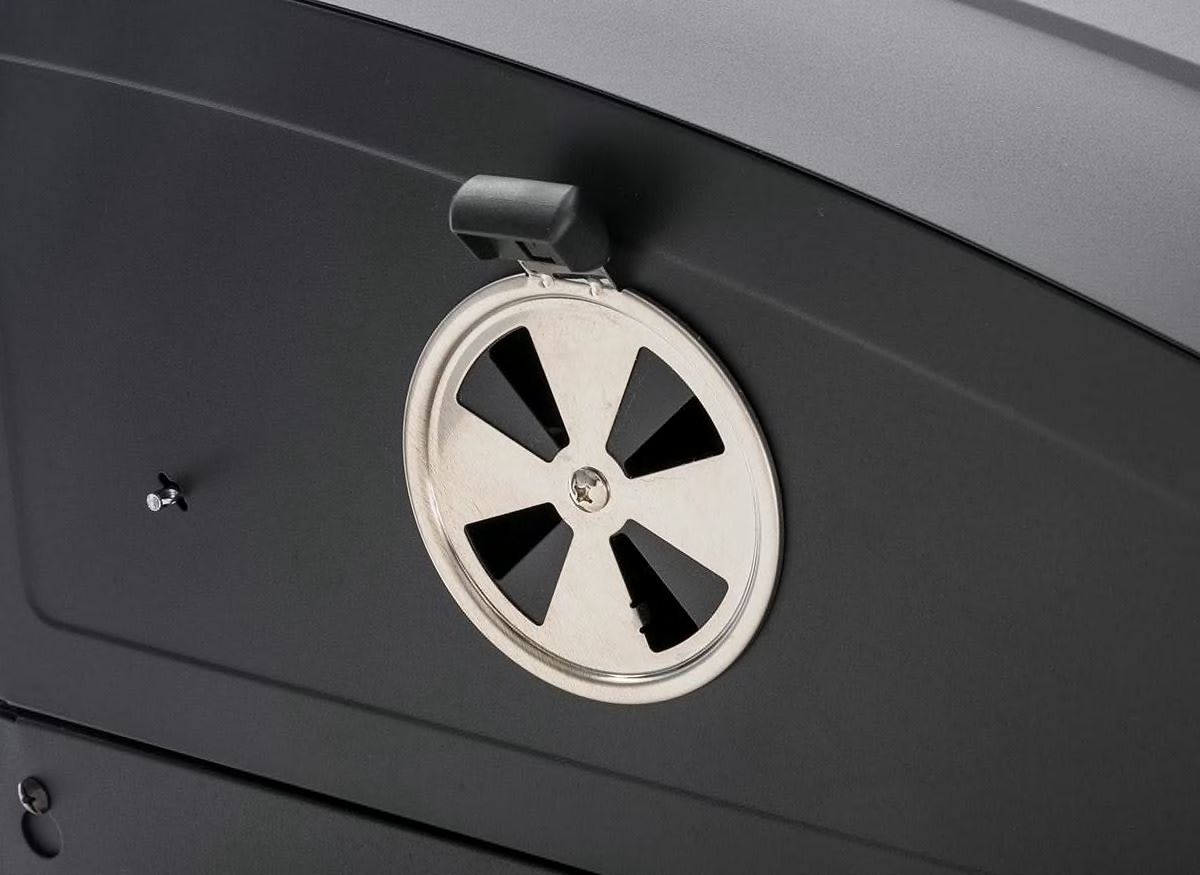
Multiple Vents or Dampers
Burning coals are fueled by air; the more air, the hotter the temperatures. Grills with at least two vents give you greater flexibility and temperature control.
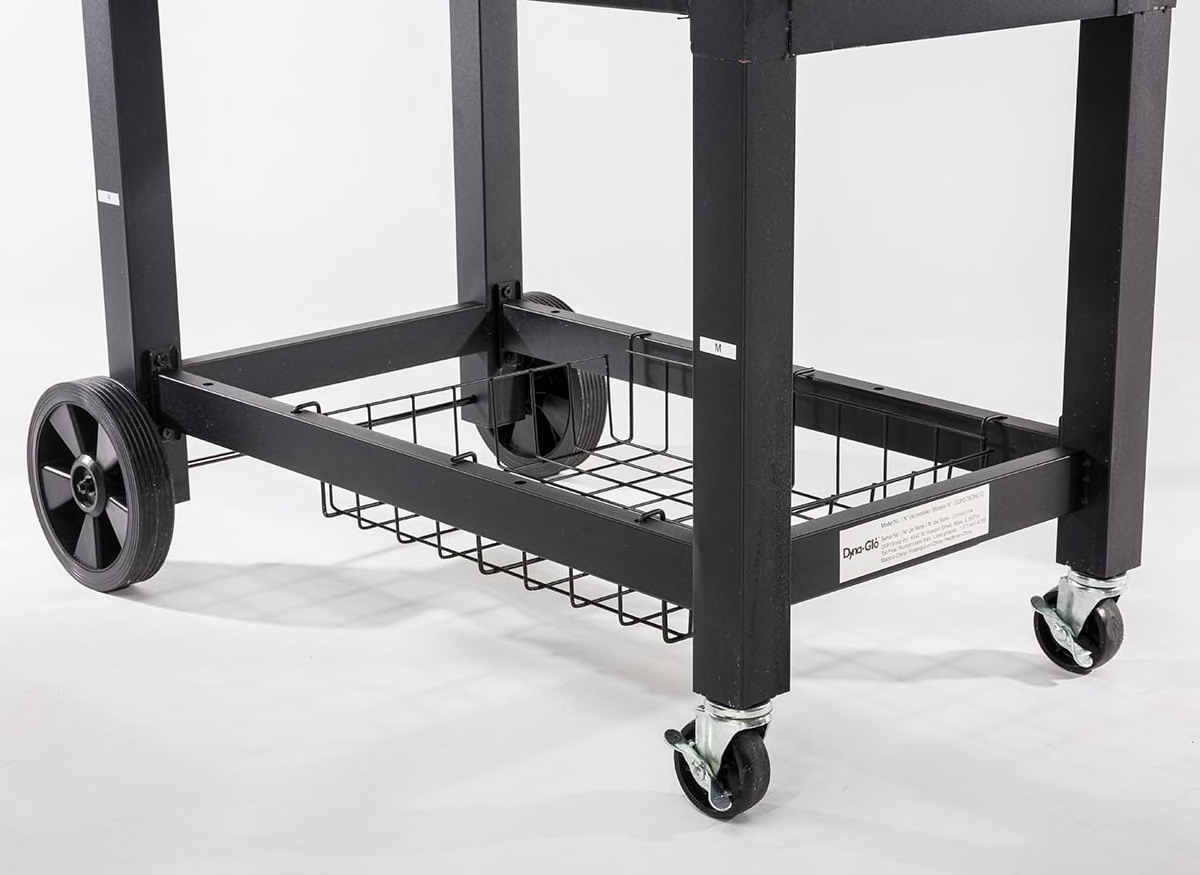
Wheels
A wheel or caster for each leg makes it easier to move a charcoal grill on your deck or patio. Some charcoal grills have four wheels, some have two, and some have none.
Adjustable-Height Cooking Grates
Adjustable-height cooking grates let you raise and lower food—the equivalent of turning down a burner on a gas grill. Get the food closer to the coals for searing or farther away to, say, cook a skin-on chicken breast all the way through without charring the skin.
Easy-to-Clean Ashpan
Charcoal cooking can get messy. All the ash, residual coal, and food drippings tend to collect at the bottom of the grill. Models with a removable ashpan are easier to clean.
Easy-Open Grates
A dedicated coal door or grates that slide open easily allow you to add charcoal without moving your food much or removing hot cooking grates.
Multiple Vents or Dampers
Burning coals are fueled by air; the more air, the hotter the temperatures. Grills with at least two vents give you greater flexibility and temperature control.
Wheels
A wheel or caster for each leg makes it easier to move a charcoal grill on your deck or patio. Some charcoal grills have four wheels, some have two, and some have none.
Pellet Grills
Pellet grills blend the flexibility of a charcoal grill and smoker with the convenience of a gas grill. The models in our ratings have the same general design, and range in price from $280 to $1,300. A large metal bin, or “hopper,” holds pellets made from the compressed sawdust of flavorful woods, such as oak, hickory, and mesquite. An electronic mechanism draws out these pellets, which are then lit by an igniter, creating heat and smoke that impart a distinct flavor to your food. A thermostat allows you to adjust the heat to a precise temperature—something you can’t do with gas or charcoal grills.
How to Choose a Pellet Grill
Our protocol for evaluating pellet grills is a hybrid of our gas- and charcoal-grill tests, including tests like cooking evenness and indirect cooking. Here are a few more important factors and specs to consider.
- Hopper size: The larger the hopper, the longer the grill can cook without needing to have more pellets added.
- Temperature range: The models with the highest temperature range score in our ratings are more versatile because they can sear at high temperatures and also slow-smoke foods at low temperatures. (Those in our tests run as low as 160° F and as high as 600° F—and even hotter on a dedicated searing zone.) It’s worth noting, however, that pellet grills generally can’t get as hot as the best gas, charcoal, and kamado grills.
- Searing zone: If you like searing food, make sure the model you’re interested in has a dedicated spot. In most pellet grills, the heat deflectors across the cooking surface (to help prevent burning and flare-ups) often make it harder to sear, too. A searing zone allows you to remove the heat deflector so that foods like steak can be directly exposed to the flame. In general, pellet grills don’t sear as well as the best gas and charcoal grills, and they don’t produce sear marks.
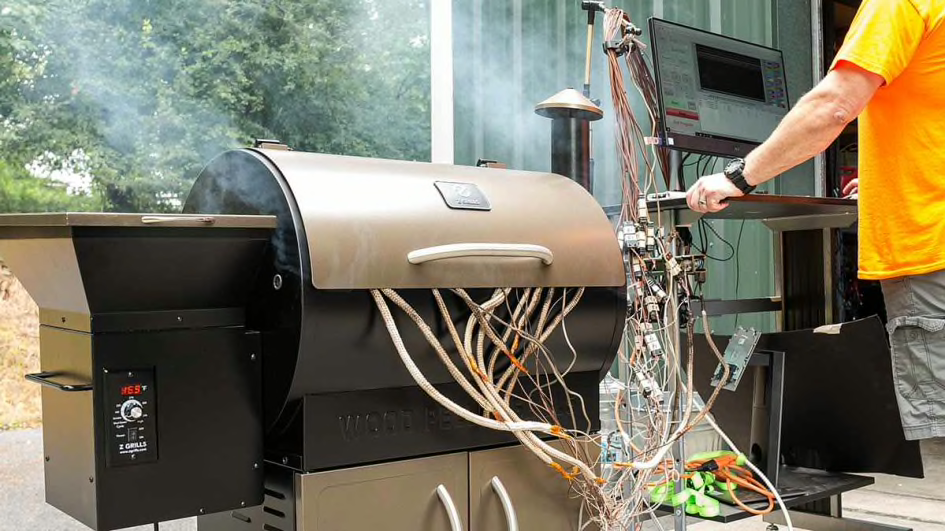
Photo: Consumer Reports Photo: Consumer Reports
Flat-Top Grills
Flat-top grills are the only type of grill that lets you cook on a single, smooth surface (like a griddle) in place of grates. That means they serve up foods you’d never consider on a conventional grill, like eggs and pancakes. These grills are also stellar at searing, making them great for burgers and hot dogs. They draw heat from a propane tank, just like gas grills. Without grates, you eliminate flare-ups, but you also lose the signature grilled flavor that happens only when food comes into direct contact with a flame. You won’t be seeing any grill marks, either. Prices for models in our tests range from $280 to around $1,100.
How to Choose a Flat-Top Grill
We test flat-top grills in the same way we test conventional gas grills and consider many of the same factors, including even heating and indirect cooking. But keep these factors in mind, too.
- Burners: Flat-top grills typically have between two and four burners, each of which controls the heat over a portion of the grill’s cooking surface. Models with more burners can make it easier to regulate heat by keeping some parts of the grill hotter or cooler than other spots.
- Size and design of the cooking surface: Models with a larger surface let you cook more food but may also take longer to heat up. Look for an option with a tall lip around the sides and back of the cooking surface, which can help prevent runaway hot dogs and asparagus from rolling off the grill.
- Side burners: Some flat-top grills include a side burner, which allows you to use regular cookware to warm barbecue sauce, heat mac and cheese, or even boil corn while you cook on the grill.
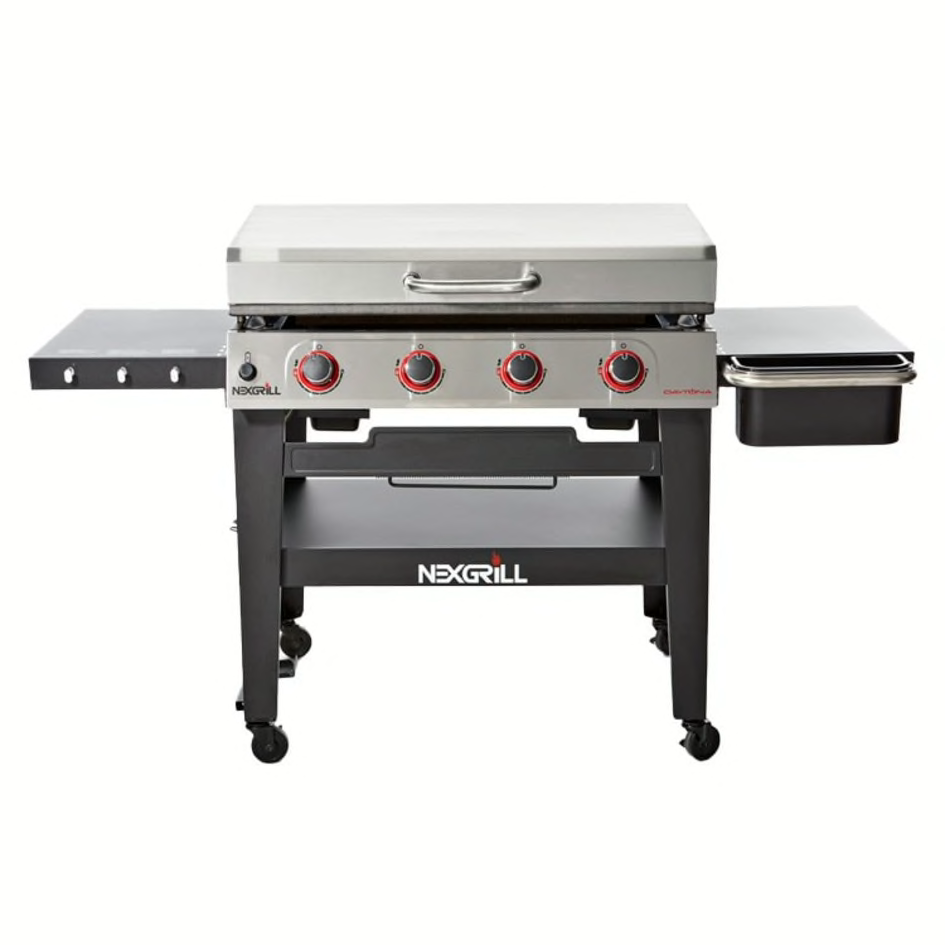
Photo: Consumer Reports Photo: Consumer Reports
Grill Brands
CR tests grills from over 40 brands. Here are some of the most popular.
Among the first widely sold kamado grills in the U.S., Big Green Egg has developed a cultlike following and inspired a number of copycat cookers from other brands. The model is sold at Ace Hardware and local hardware and outdoor specialty stores.
Broil King’s lineup includes grills from basic portables to large models with the styling of pro-style ranges. The models are sold at Amazon, Home Depot, Walmart, Wayfair, and specialty stores.
Broilmaster gas grills are sold at specialty stores and often come at premium prices.
Char-Broil, a top-selling brand, has a wide product range, including a hybrid grill that allows you to cook with both charcoal and gas. The brand’s grills are sold at Lowe’s, Target, Walmart, and other retailers nationwide.
A company known for its camping gear, Coleman makes portable gas and charcoal grills for the patio and tailgating as well. Coleman grills are sold at Amazon, Home Depot, Target, Walmart, and other retailers.
Dyna-Glo makes gas, charcoal, and pellet grills, and it has more recently come out with a dual-fuel grill that allows you to grill with both charcoal and gas. Dyna-Glo grills are widely available at retailers nationwide and online, including Amazon, Home Depot, Lowe’s, and Walmart.
Even Embers makes lower-priced gas, charcoal, and pellet grills. Its models are sold at Amazon, Walmart, specialty stores, and select online retailers.
Kenmore gas and charcoal grills are available at a wide range of prices. They’re sold at Sears, as well as online at Amazon, Home Depot, and Wayfair.
Member’s Mark gas and pellet grills are sold exclusively at Sam’s Club.
Except for its portable models, Napoleon offers gas grills that boast stylish stainless steel construction at higher prices. Its grills are sold at Amazon, Home Depot, Walmart, and specialty stores.
Nexgrill gas, pellet, and charcoal grills are available at Home Depot.
The first manufacturer of pellet grills, Traeger remains one of the best-known brands in the category. Its pellet grills come in a variety of sizes and with a range of features. (The most premium offerings even have smart capabilities.) Traeger grills are sold online, at local retailers, and at Ace Hardware and Home Depot.
Weber is often known for its ubiquitous kettle charcoal grills, but the top-selling brand also offers gas grills priced on the higher end of the middle price range. Weber grills are widely available from retailers across the country.



























